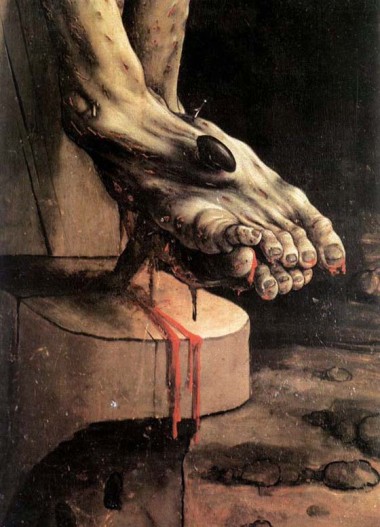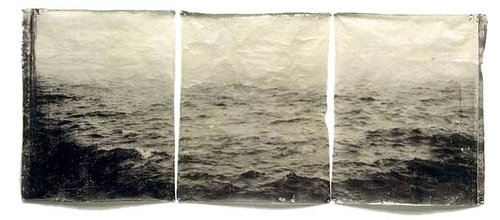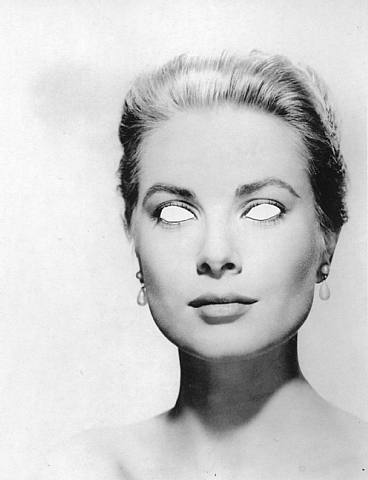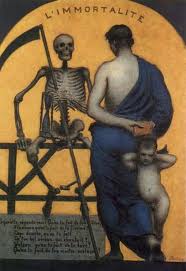
John Coplans
“It is true, we only see what we look for, but we only look for what we can see.”
Heinrich Wolfflin
The last posting generated a long comment thread. Not surprisingly, it wasn’t about the main subject of the post, but about the shorter film critique at the end. There is no escape from the implications of mass culture. I want to examine, a little, two things; one is the idea of fashion, and the other is how this is the way in which the classical idea of culture has been subsumed in a sense by the rise of the culture industry. And by extension, then, the ways fashion has affected even political thinking.
From the middle of the 19th century, ideas of style became something labled ‘fashion’. And this was the creation of a manufacturing industry, whereby changes in fashion, the invention of the “new”, was the stimulus for increases in production. Difference, at least in appearance, became more important than quality or utility. The consumer wanted what was new. If fashion was originally, at least say in clothing, generated by class distinctions — the ruling class not wanting to share appearances with the lower classes; these relationships came to be increasingly muddied (and today there is the striking reality of constant appropriation of lower class organic fashion, and style, for reproduction on a mass scale for an affulent consumer demographic).

Maurizio Cattelan
What is interesting in this constant shifting of class imitation, class assimilation, and class differentiation, are the energies released in these searches for “newness”, or novelty, and how shopping increasingly became eroticized. But I will come back to that…the question as it relates to the previous posting and the long comment thread is one of intellectual fashions. For there is buried within these forces the creation of a subject, and further, a political subject. Taste is manipulated. And it extends to the reified experience of “artworks”. Today, of course, this means firstly film and TV.
There is a paradox here, which Horkheimer and Adorno identified in the 40s, and that is that despite the obsession with newness, with fashion, the products remain amazingly close to the same patterns and forms of the past. The “new” is not new.
The relations of production ensure the consistency of repetition, with only changes in presentation.
“Culture under capitalism reveals another side of the dialectic of enlightenment in which the irrational is rationalized and the rational in turn takes the mask of the irrational as an alibi.”
Frederic J. Schwartz
Art’s need for innovation was divorced at some point from the mass produced commodity, which created a new fashion image as a way to increase demand. Art was searching for ‘new’ as a way to step outside the commodity market. Of course, these tendencies blur at a certain point, too. But art is never able to really seperate itself completely from its sharing the logic of capital. And it is in this coinciding and opposition to capital that art began to be appropriated by the elite market. That artworks, because of their excess, or distance (seeming or real) from mass produced fashion (which is there to reinforce that nothing changes) became a special elite currency. This takes place in another way in film and TV, however. Adorno was quick to point out, in his later work, that all interpretation relies on comparison and translation to and of the old. The intellectual kitsch that suggests everything is just a rehashing of something old is alive in the political realm today as well as the cultural.

Matthias Grunewald, The Crucifixion, detail
It is here that the concept of mimesis is so important. Adorno used the term schauer, shudder, to describe the experience of an artwork — one often identified as ‘new’– that is non identical, non fungible. It is a form of knowledge or thought that is, as Schwartz says, physical and somatic. It is a sudden awareness of something that is engaged with mimetically. Mimesis is not only imitation. That mimetic imitation is linked to this idea of the real. To the idea of nature. And additionally, this relates to the idea of abstraction. And it is why I argue so strongly against the usual leftist insistence on message. The artwork communicates a knowledge, but that knowledge is not found in opinion or message or theme. In fact message is the first register to be subsumed by the culture industry. Message cannot but fail to be its opposite.
Appropos of the comment thread, I quote Adorno:
“The abstractness of the new is crucial, it can be known no more than the most horrible secret of Poe’s pit.” The new is pointed to, but not identified. It is the “hidden telos of freedom and truth before it is frozen into concepts…”
Or into message. Instrumental logic recoups in its process of explanation.
Hence, the mimetic is always negation. Now, today, within an era of hyperbranding and almost total commodification, there exists an impulse toward the falsification of the false. The sedimented traces of domination in style are based on property relations (inheritance, etc). For style suggests permanence. This is one reason that theatre, inherently resistent to commodification, remains so subversive. The sense of the non permanant is also found in other ways in narrative whose structure defies easy expository descriptions, that defies conventional criticism about structure. These qualities of duration, the ‘processural’ part of narrative is directly connected to the mimetic. Plots per se close off the mimetic. The anticipation and expectation of tension, suspense, and resolution are all regressive. The elliptical narrative, the fragment, too, in a way, and the unfinished are all strategies of escape from the imperatives of universalizing truth. The mimetic is ephemeral. Once the artwork is appropriated for interpretation, by interpretation, it has lost its truth content; the second it can be used to start a new tradition it is dead.
There is a subtle but important distinction to be made between narrative that purposely obfuscates with an artifical mystery, and that which specifically addresses the unseen forces that shape society and consciousness.
The ‘new’ that forms the basis of innovations that in turn create new traditions is compromised. One of Adorno’s crucial insights was that fashion is often overlapping with art, and that (and this quite prescient) the cultic aspect of the art market (timeless truths, universalizing meaning, etc) is neutralized to a degree by this overlap. And that the genuine mimetic shudder can be felt in an experience of artworks that are often largely commodity kitsch. Hence the debate about The Counselor. Academia and all institutions that serve as arbiters of taste are in the business of killing art.

Doug and Mike Starn
Fashion, not looking for eternal verity, freely incorporates alientation. The abstract quality of the commodity, recognized by Marx obviously, is congruent with the image of abstraction. And for narrative this means the destruction of ossified form. The radical vision is one that escapes social domination, social untruth, by questioning the ideas of progress which in turn are predicated upon the permanence of property rights and ownership. As the hegemony of ownership is realized now, the ability to create is in flux.
An in depth look at mimesis is really something worth undertaking, though not for the purposes of this post. The role of language is a related topic for the speech of everyday life is now more mobilzed for propaganda purposes than ever before. I have noted the rise of irony as part of the packaging of most cultural commodities, and of most art criticism. For theatre, there are probably exactly no good critics writing today. Such is the total domination of culture by film and TV. So the problem of sincerity seems one that returns again and again. The prelapsarian past of expression-as-sincere is today accused of being camp. The grinding force of cynical distance to mimetic reading has forced the last couple generations into a strange hermeneutical paralysis regards sincerity. I wonder if one took a survey of University age students, educated, and self identifying as interested in art, and asked for their opinions on certain artists …David Lynch for example, and then asked the same question of University graduates over the age of forty five, what the results would be. I suspect that nobody over forty five values Lynch. Perhaps this is wrong, but I would bet it’s not. The atrophying of mimetic sensitivity has meant, coupled to the constant bombardment of a message that reinforces shopping (structurally) as its own art, has meant that narrative is read in an increasingly one dimensional way. This also implicates instrumental thought and its pervasive effect. At the same time, the older generations would relfexivly disparage a Lynch for mostly the wrong reasons. There are so many intersecting threads here, and the Puritan/Quaker repressive and neo-religious condemnation for anything not exhibiting clear marks of an expertise in craft is just one floor in the great edifice of naturalism.
The energies now devoted to shopping, contribute to a new subject position that has erotized commodity selection. Value judgements take on a characteristic of sexual selection. The adornment of the self with the plumage of opinions, owned like a new Mercedes Benz, is part of the enclosing of discourse. One is what one shops for. Everything in a sense is fashion. But its a specific sort of fashion. It is also the eternalizing of fashion. The elevation of kitsch appreciation bestows on junk commodities the qualities of importance the shopper wants to adorn him or herself with.

Thomas Struth
Now, this is of course that affluent class. The poor are now increasingly a problem population for which more prisons are needed, and are, in fact, being hurriedly built. The creation of the subject really means the white subject. Those with the income to avoid the soul killing constant of worry and dread.
So, how does this relate to narrative? I think the culture industry constantly creates narratives that demonize the poor, minorities, and stigmatize dissent, and which shame the most vulnerable. It manufactures a cynicism of condescenion. The difficulty in terms of culture and art is that the poor, and the lower classes, look to art and culture for something more than message I think. This is a bit of a paradox, but artworks that incorporate alientation, in the same way much advertising does, and fashion does, are not experienced as nihilistic by the poor. That sort of nihilism is the privilege of the those on the upper rungs of the economic ladder.
These class divisions are pointed out by Brad Evans and Julian Reid on their excellent piece on the Russell Brand backlash:
“But what is it about Brand’s revolutionary calling that so offends? Or to put it in more explicit terms, what gives this flamboyant, sexually extroverted, self-confessed ex-junkie, comedian and public celebrity, who is not a recognized expert in politics, nor established member of “the Left,” the right to speak about politics and revolt? Could it be that Brand perturbs simply because he doesn’t know his place, speaks out of turn, and commands attention on subjects he has no recognized expertise in or historical record of engagement with? Could it be that the Russell Brand “Brand” offends the sensibilities of leftist liberals because he challenges their own intellectual monopoly on questions concerning the stakes of political struggle, social transformation, and indeed, the very future of “the left” itself? And is it not the case that in having the temerity to speak on these issues he effectively exposes the poverty of the prevailing branded visions of politics to be found available on the liberal left?”

Douglas Gordon
Henry Giroux wrote:
“Totalitarian temptations now saturate the media and larger culture in the language of austerity as political and economic orthodoxy. What we are witnessing in the United States is the normalization of a politics that exterminates not only the welfare state, and the truth, but all those who bear the sins of the Enlightenment—that is, those who refuse a life free from doubt. Reason and freedom have become enemies not merely to be mocked, but to be destroyed. And this is a war whose totalitarian tendencies are evident in the assault on science, immigrants, women, the elderly, the poor, people of color, and youth. What too often goes unsaid, particularly with the media’s focus on inflammatory rhetoric, is that those who dominate politics and policymaking, whether Democrats or Republicans, do so largely because of their disproportionate control of the nation’s income and wealth.”

Xavier Mellery
The question is, if the culture industry exerts near total control of screen life, then it would be logical to see in those oppressed a flight from these expressions of totalitarian values, of state violence and the normalizing of domination. But that’s not the case. I somehow feel in all this that narrative provides something independent of message. In fact I suspect for the underlcass that narrative is experienced differently from that of the educated affluent 20%. It is a source of discussion, of refuge, as well, even when the message is counter to their interests. It’s read differently. Now clearly this is a huge generalization, but I suspect, and I take this from my own experience growing up on welfare, that its not escape (though it is always that, too) but rather the need for those glimpses of Utopian potential, usually of an unconscious sort. For as Adorno said, only the alienated object can speak to the alienated subject. In the same sense a cliche is not always a cliche. It was McLuhan who recognized the liberating potential of cliche, repeated enough draws a new attention to itself. Certainly the final stage of modernism, in Ionesco and Genet and Beckett, saw the careful insertion of cliche in the narrative. But here again, one becomes aware of the violence of irony. My point is only that the status quo reproduces that which feeds the market, and which speaks the language and story of social domination. And as film and TV eclipse other forms for perpetuating the master discourse, for propaganda, it also has increasingly unleashed small examples of work that overlaps fashion, and whose familiarity becomes unfamiliar, who mediates the expected message with a counter experience of mystery. Hollywood now so compulsively repeats itself, that this repetition has spawned its own negation. The insertion of text or camera or performance that resists the formula often ends up just the start of a new formula, but on occasion it negates the formula.

Cord Meyer, Jr.
There is an element in this, that I borrow from Benjamin, whose Origin of German Tragic Drama, looked to re-think work that had long been lumped in the basket of folk art junk. His argument was largely about the temporal relevance of 13th century German tragic theatre, considered previously as too violent, as crude, as simplistic, and examine it in the context of the time in which it was created. The “trauerspiel” was in a sense an assault on the symbology and universal validity of classical drama, seeing the disunifying qualities of ‘the mourning plays’ and how they subverted notions of traditional allegory. The subject matter of these writers; Opitz, Johann Christian Hallmann, and von Lohenstein, was death, murder, chaos and especially decay. It is an interesting notion to look at writers like Jim Thompson in this light, or even Cormac McCarthy. For these are all writers of cultural decay, and the ruins of nature. For they examine or question exactly what ruin is.
The belief in a truth of that which must be assembled from fragments, and under new aesthetic laws, was something shared also by the Constructivists. Which is even more interesting is that Benjamin’s essay was submitted as a graduate thesis to the department of art history, and specifically architectural drawing. For architecture played a very influential role in allegory as Benjamin saw it. For it was about space. Ive written a good deal about space in terms of contemporary theatre. The off stage as the repository of the unconscious. The Id, and what is on stage is there to make the audience aware of what is not.

Theo Von Doesburg
The point is that the application of instrumental analysis to artworks, and narrative, is going to tend to allow the authoritarian policing of ‘meaning’. The artist is ordered to mean something. It reminds me of the plague of headlines that are actually orders….YOU WILL NOT BELIEVE WHAT THIS HOT DOG SALESMAN DID”. Orders are everywhere. Commands. The structural cadance of the command infects and seems bound up with the restrictions of technology, of computer prose. There feels a hidden imperative to dictate, and often that dictatorial impulse covered in a slick membrane of irony.
And finally…
This is the 50th anniversary of the Kennedy assasination. It is just one more example of the revisionist history of the ruling state. Anyone who can’t grasp that the cover story is nonsense (and much like the Osama Bin Ladin official story, in that all evidence was missing…autopsies, photos, etc) is just refusing to wake up. The CIA, or some faction of it, is almost certainly to blame. I mention this only because the images are so part of U.S. culture now. The Zapruder film, the grassy knoll etc. The mythology is now refied and fetishized and forever inscripted in the consciousness of Americans. The evil of men like Allen Dulles, or John Mitchell help form the constitutive spine of the police state. But other names crop up, it is the stuff of nightmares. James McCord, and Nixon, and actress Joan Crawford (Pepsi heiress) together in Dallas, the Pepsi corporation had a sugar plantation in Cuba that Castro nationalized a decade earlier. Or James Angelton, or E. Howard Hunt. The list is endless. The tentacles spread everywhere. Rioss Mont, James Files, School of the Ameericas, and Cord Meyer, and Lucien Sarti, and then we’ve expanded to the French Connection. This is the fascist deep state. People complain that if it were a conspiracy someone would have talked. Well, people have, but predictably are ignored (E. Howard Hunt). These are the deeper layers of our nightmares.


On the Deep State and the JFK assassination, you might be interested in this short bio of Charles Douglas Jackson – CIA agent, Time-Life Executive, presidential psywar adviser, Bilderberg founder, and agent for the purchase (and subsequent control) of the Zapruder Film by the Luce organization. http://www.spartacus.schoolnet.co.uk/USAjacksonCD.htm
oh thanks, I love discovering ever more………